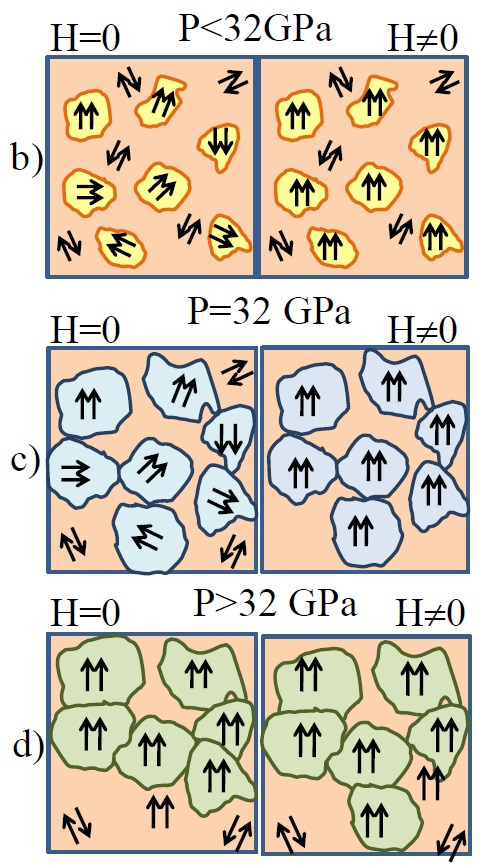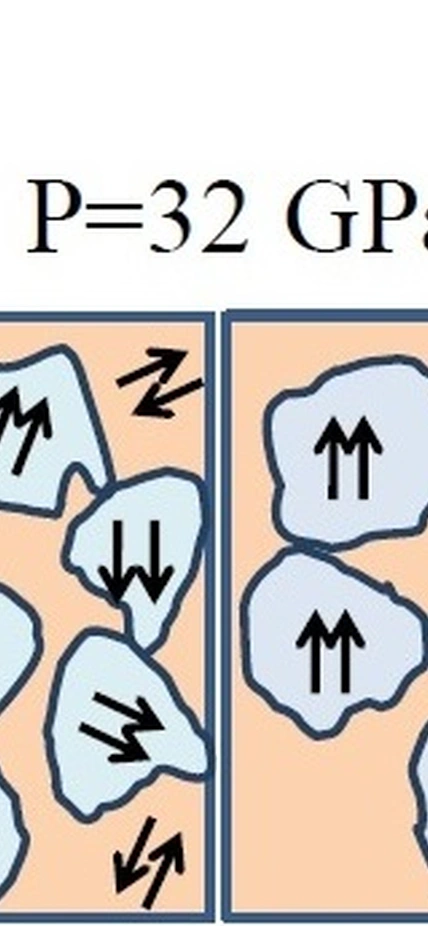Washington, DC—Colossal magnetoresistance is a property with practical applications in a wide array of electronic tools including magnetic sensors and magnetic RAM. New research from a team including Carnegie’s Maria Baldini, Ho-Kwang “Dave” Mao, Takaki Muramatsu, and Viktor Struzhkin successfully used high-pressure conditions to induce colossal magnetoresistance for the first time in a pure sample of a compound called lanthanum manganite, LaMnO3. It is published by Proceedings of the National Academy of Sciences.
Metals are compounds that are capable of conducting the flow of electrons that makes up an electric current. Non-metals cannot conduct such a current. Magnetoresistance is the capacity of compounds to be changed from electrically resistant to electrically conductive depending on the presence of an external magnetic field. The ability to switch on and off from metal to non-metal is what makes the phenomenon so useful for electronic and spintronic devices.
Manganite compounds, such as the LaMnO3 studied by the research team, are particularly promising when it comes to colossal magnetoresistance, because the change from insulator to metal is several orders of magnitude stronger than in other types of compounds. But controlling and understanding it has remained largely elusive. It has been induced before in chemically doped manganite samples, but not in a pure one until this study.
The transition from insulator to metal in LaMnO3 takes place when the room temperature compound is placed under about 316,000 times normal atmospheric pressure (32 gigapascals). What the team was able to demonstrate by examining LaMnO3 across a range of temperatures and pressures, is that under pressure LaMnO3 separates into two distinct phases, one metallic and one non-metallic. The chemical structure of the non-metallic phase is distorted, and the metallic phase is not.
The insulator-to-metal transition occurs when the metallic phase exceeds the non-metallic one by a certain threshold. This is confirmed by theoretical predictions. But the existence of a period when the two phases are mixed together is the crucial ingredient for inducing colossal magnetoresistance. The phenomenon occurs when the competition between the two phases is at its maximum. The physical separation of the two phases and the interplay between the deformed structure and the non-deformed structures is the key to driving the colossal magnetoresistance
“The ability to induce colossal magnetoresistance by applying pressure to a pure, un-doped sample is a major step forward in understanding the physics underlying the phenomenon and to potentially harnessing it for practical purposes,” Baldini said.

Caption: Lanthanum manganite under less than 32 gigapascals, 32 gigapascals, and more than 32 gigapascals of pressure, both with and without a magnetic field applied. Thirty-two gigapascals is equal to about 316,000 times normal atmospheric pressure. A larger version is available here.
__________________
The other co-authors on the paper are M. Sherafati of Instituto de Ciencia de Materiales de Madrid, L. Malavasi of University of Pavia, P. Postorino of University of Rome “Sapienza,” and S. Satpathy of University of Missouri Columbia.
This work was supported as part of the Energy Frontier Research in Extreme Environments Center (EFree) and Enger Fronteir Research Center funded by the Department of Energy’s Office of Science. Other support was obtained from the DOE’s Office of Basic Energy Sciences and the European Union Seventh Framework Programme Graphene Flagship.
